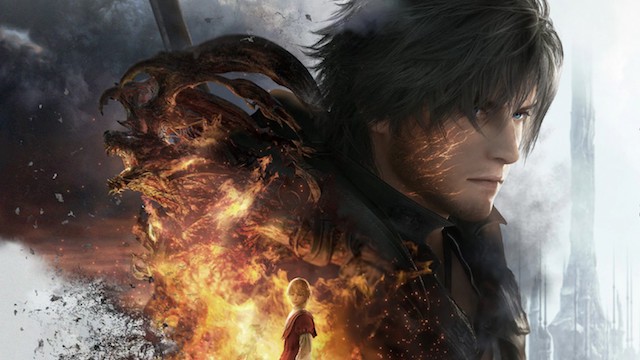Final Fantasy is a big deal, and there’s a reason for it. Whenever a new series entry is announced it causes a lot of commotion, which is greatly multiplied when said game releases. That’s where we’re currently at, with the recent release of Final Fantasy XVI, the franchise’s sixteenth mainline installment. Along with the new Zelda, and a couple of others, it’s the talk of the industry and very popular online. Is it a good game, though? Let’s discuss that.
This time around, the cinematic narrative and its many cutscenes centre upon a young man named Clive Rosfield. Born into royalty, he became a pariah in his mother’s eyes when she realized that he had the ability to do magic without a crystal. Thus, he became known as a Bearer; one of a kind that is usually forced into slavery, where they’re made to use their basic magical skills to complete daily tasks for their keepers. All the while, their bodies slowly turn to stone because of overuse of said magic.
Clive is the firstborn son of the Archduke of Rosaria, and his close ties to his loving father kept him from ending up enslaved. His mother felt otherwise, and doesn’t really talk to him because of his affliction. She’s only got eyes for her youngest son, Joshua, who is a sickly thing who needs a lot of attention and care despite being what they call a Dominant within this world of Valisthea. Dominants, you see, host Eikons within their bodies and can use them in battle. What’s an Eikon, you ask? Well, they’re basically summons from previous games, like Final Fantasy VIII. Joshua was born with the ability to turn into the Phoenix, making him the fire Dominant.
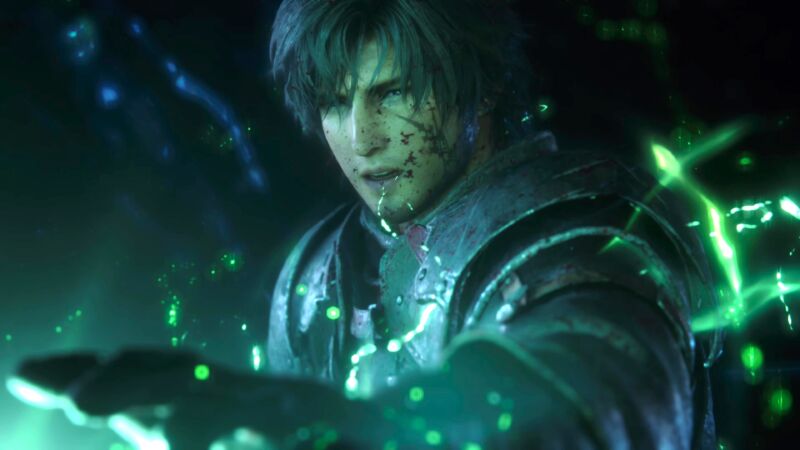
Clive wasn’t born with nothing, though, because he’s able to use fire in battle as well. He can light his sword on fire, and can shoot magic fireballs out of his hand, though they don’t do much damage. There are also a couple of related abilities he can pull off during fights, and those can cause a heck of a lot of damage.
The first part of the game has you jumping between adult Clive and his former, fifteen year-old, self, allowing us to see how he grew up and some of the events that shaped him. In fact, something happens to teen Clive that forever changes his life. It occurs on an excursion with his father, brother and a bunch of other Rosarian soldiers, and leads to Clive becoming a Branded slave after all. It’s this unfortunate, killer for hire role that we find him in when we first meet him as an adult. Adorned with the same face tattoo as all of the others, he’s been sent out on a mission to kill Shiva’s Dominant.
Then, when Clive meets someone named Cid, his life changes again, but I won’t spoil how. There’s always a character named Cid in Final Fantasy games, though, isn’t there?
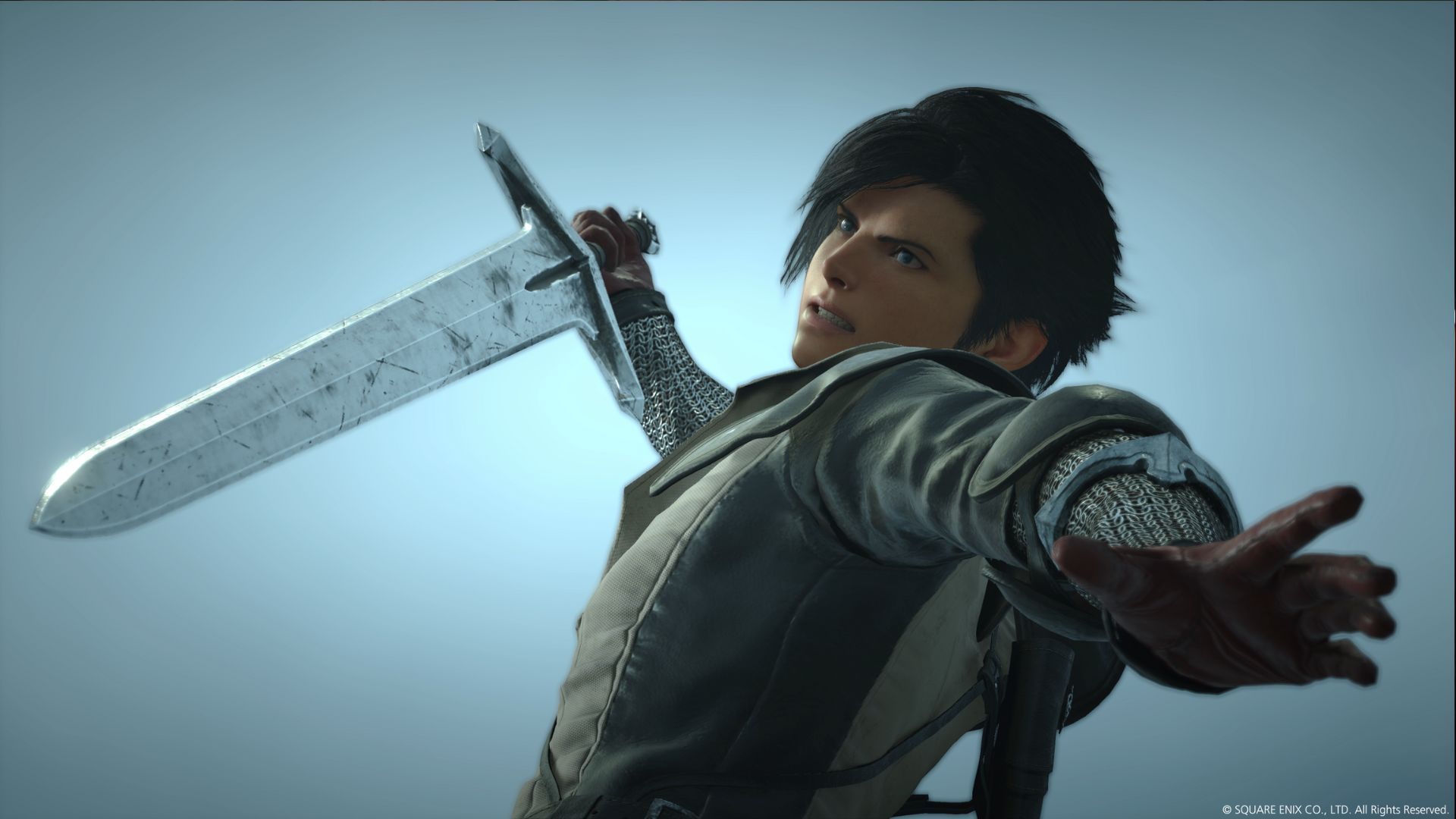
A series that was once known for its turn-based battle systems has since become something else, and that something else is an action-RPG. Final Fantasy XVI puts the word action front and centre, and delivers a really enjoyable battle system as a result. Clive is quick with his sword, and isn’t afraid to jump or boost into the air in order to take out pesky flying enemies like killer bees, hornets and mini-dragons. In fact, one of the best things about this system is the opportunity to chain combos together, while on the ground and in the air. To this extent, there’s a practice arena in which one can test and hone his or her skills, provided one wishes to do so.
Clive is a sword-based character, and it’s possible to pull off combos with it. However, he’s also capable of using special powers that result in unique, elemental abilities. These can be cycled through using the L2 button, and are pulled off using the R2 button and their corresponding face button, be it square or triangle. Once you have a good assortment of them, it’s easy to link them all together without much of a breather, allowing you to absolutely pummel your foes. Furthermore, it’s easy to change them up and equip the ones you’d prefer. Only three sets of magic can be equipped at one time, totaling six special abilities, all of which must regenerate once used. However, as I said a moment ago, you can pick and choose which ones to equip, and can even mix and match regardless of their elements.
What’s interesting is that each element alters your available abilities, and by that I mean what happens when you press circle. You see, if fire is equipped then you can press it to dash forward, including into the air, in order to get closer to enemies. Meanwhile, when you have the earth element equipped circle allows you to perform a block which can be used to parry enemies if you time it properly. Each of these elemental magics is built differently, with earth being about pulling off massive punches and blocks, wind being about fast and sometimes aerial damage, and fire being a nice mix.
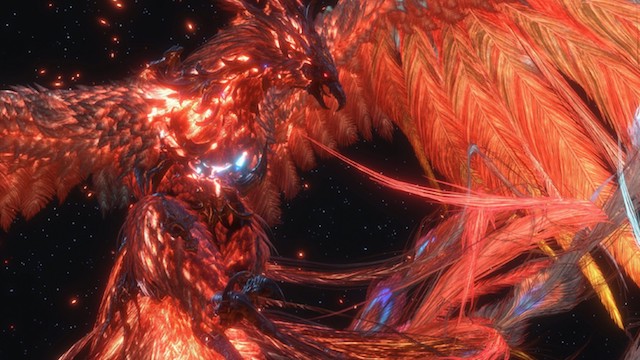
The combat is fast, it’s addictive and its very visceral, making it both fun to execute and fun to watch. I haven’t played every Final Fantasy game out there, but I’d have to say that it’s my favourite battle system thus far, out of the ones I have played (and occasionally completed). It’s accessible but takes skill to master, it’s fun to use and it makes you feel like a badass a lot of the time. In some ways it’s like something out of Bayonetta or Devil May Cry, although not nearly as colourful, weird or out of the box.
Of course, you’re expectedly tasked with trying to stagger your enemies, which stuns them for a short period of time. It’s at these moments where you can do the most damage, so you’ll want to save some of your special abilities for then. This includes an overpowering attack that you get later on, and can trigger by pressing both thumbsticks in at the same time. Not only does it do a ferocious amount of damage, but it also heals you somewhat.
Don’t expect to fight alone, either, because different allies will join Clive’s party throughout the course of the game. This isn’t like the old days, where you would choose who to take with you. Instead, it’s all handled organically through the story. You’ll practically always have a canine companion named Torgal by your side, though, and he’s nice to have. He isn’t shy about attacking enemies and keeping them busy, and can do a decent amount of damage at times. You can also order him around, or tell him to heal you, though the latter option isn’t very helpful for whatever reason.
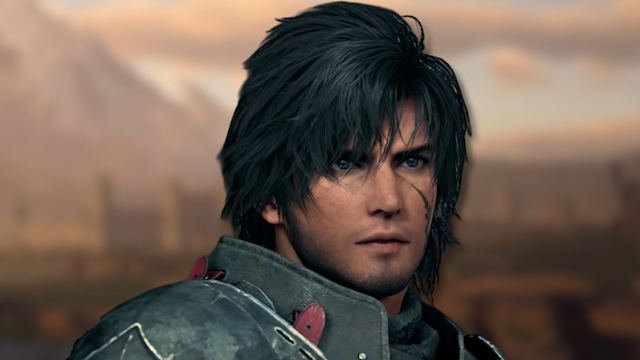
Speaking of healing, it’s important to point out that this installment limits the amount of potions you can carry at one time. It’s weird, and I’m not crazy about it, but it works into the more linear and action-focused style of gameplay that is presented this time around. I’m talking about the fact that you can only carry four regular potions, three super potions and up to two elixirs, which cost a lot but completely heal you. Three different consumables, be they health potions, elixirs, defensive tonics or what have you, can be equipped to shortcuts. Said shortcuts are just some of the d-pad’s directional buttons.
One of the absolute best things about Final Fantasy XVI is its boss battles, which are often epic in scale and very memorable as a result. Sometimes these boss battles will become massive in scale, because of Eikons entering the fold. At that point, it becomes like a War of the Monsters type thing except much more modern and a lot more beautiful. It’s epic, it’s badass and it’s a treat for both the eyes and the fingers. You never know what to expect when you begin a boss fight in Final Fantasy XVI, and that’s a great thing.
With that being said, there are a lot of what you’d probably call mini-bosses spread throughout the game. These usually take the form of regular fights, but introduce new variables in the ways that these enemies attack and can be damaged. They can be massive, shielded badasses, monstrous creatures or something else. Regardless, they don’t offer the same type of creativity or epic scale battles, which is okay. If they were too frequent they’d (maybe) get stale.
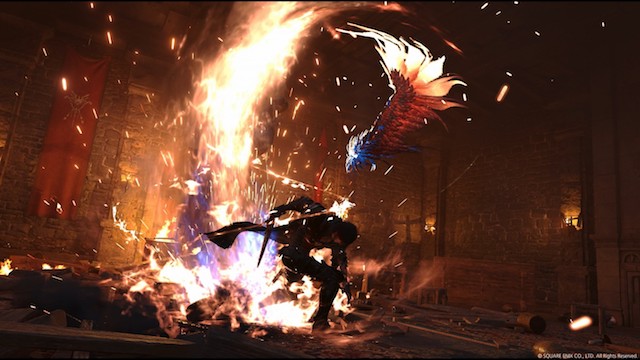
As I mentioned earlier in this review, Final Fantasy XVI is a more streamlined RPG than its predecessors, and a more action-oriented one at that. As such, it’s quite linear. You’ll generally complete a quest, then head back to your Hideout to talk to your allies and get ready for what’s next. You’ll find side quests dotted around the map, and at the Hideout, but there isn’t a ton of them. We’ll talk about side quests in a bit, though.
Through the aforementioned structure, you’ll find that the world map isn’t fully open world. Instead, it looks like a continent map from Game of Thrones, and has all of the landmass’ kingdoms represented. As you progress, you’ll unlock new areas of the map, which are designated by gray and blue fast travel points and can be revisited at almost any time. Some of these are rather big, but others are quite small. Some are also joined together, allowing you to move from one to another through connected pathways. This isn’t a game like Kingdoms of Amalur, though, where the map is fully open and you’re free to just walk wherever you want to go. It’s structured, and it requires you to fast travel from one point to another.
Over the course of the main campaign, you’ll come across a lot of different monsters that will wish to do battle with you, as well as some optional creatures like wild chocobos and a massive ox. Generally speaking you’ll be fighting two to five enemies at once, be they spiders, dragons, monstrous plants, killer bees, soldiers, wolves or what have you. You can avoid some of these battles, though, and can also focus on the main storyline if you please. I, on the other hand, went out of my way to explore every map I visited, and got into a lot of battles with optional beasts. This helped me level up quite a bit, and it was all aided by a 10% extra XP necklace I wore.
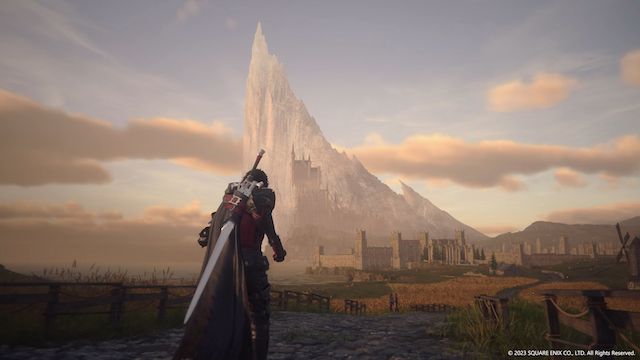
What I’m getting at here is that I was surprised by the linearity of Final Fantasy XVI, and how many of its battles are optional. Early on, I wished for more combat, but it admittedly took a while for things to get going due to linear sequences and lots of Game of Thrones inspired cutscenes, where this kingdom is planning this and this other kingdom is planning that. You can tell where the developers got inspiration from, that’s for sure.
The side quests also tended to be quite basic, at least through the first sixty percent of the game or so. They’d task Clive with walking a short ways to save someone from danger, going somewhere to collect plants for medicinal usage, helping merchants with their damaged carts, and even serving food to freed or ’employed’ Bearers. As the campaign went on the side quests got better, and I did my best to do them all. Some really stood out, but a lot felt like busywork if I’m being honest. Then again, I was spoiled by the side quests in games like Kingdoms of Amalur (a personal favourite) and Horizon: Forbidden West. It’s good to complete them for XP, though, and you also get some spoils at the end. On top of that, a number of these optional objectives help to flesh out the storyline, and allow you to learn more about the Bearers and their plight. That, as well as the blight that is turning large parts of the world into dead and blackened land.
In addition to side quests there are hunts, which provide you with a rough description of where to find certain monsters or other types of special enemies. If you find them and kill them, you complete that hunt and get bonuses for doing so. It also helps your renown, which comes with special bonuses later on in the game. However, the directions can be a bit basic and obscure, meaning you’ll have to scour the area to find what you’re looking for. That is, unless you stumble into them as I did a few times through simple exploring. Of course, not all hunt targets are good to go after at the same time, because some are more dangerous than others. The early ones are ranked at C level, but there are others carrying an A ranking.

Clive can also purchase and sell gear, be it swords, belts, armoured cuffs or perk providing necklaces, of which there are many. He can also visit a blacksmith to craft some of these things if he has the right materials from completing side quests, opening chests and defeating enemies. The thing is, though, that there aren’t a lot of options when it comes to gear. Yes, there are loads of different necklaces offering things like 10 extra damage points, 30 more defence points, added experience points, faster ability cooldowns and more money, but you can only equip three. There are not, however, a lot of swords or pieces of armour that can be made, purchased and/or sold. The gear system is limited here, but it fits with the streamlined approach. Most of the time I’d just buy potions anyways.
Speaking of buying things, I’d be remiss if I didn’t mention that you can also spend absurd amounts of money on songs to be played in the Hideout’s jukebox. The two I’ve been seeing lately cost 40,000 and 20,000 in-game currency, and I just don’t see the appeal. The in-game music is great, but I’m not one to buy music and stand around a jukebox.
This all adds up to create a game that feels different from any other Final Fantasy I’ve played, due to its focus on linearity and other changes. It admittedly took me a little while to get into Final Fantasy XVI, but I ended up getting to the point where I was really enjoying it and couldn’t pull myself away until I absolutely had to. Its linearity and lessened focus on certain RPG mechanics might disappoint some, but I still really enjoyed this game.
On the presentation side of things, Square Enix has hit a home run with Final Fantasy XVI. It looks really nice, has incredibly detailed main character models (and clothing), and has a lot of great effects to gawk at. This is especially true of Clive’s combat abilities, which are fast, colourful and visceral, but is not limited to those. After all, the Eikon battles take things to a whole different level in all regards. This is all complemented by some absolutely fantastic original music, including an orchestral score that fits the game like a glove. There was at least one boss battle where it seemed like a licensed song was used, but it also fit and made things even more grandiose.
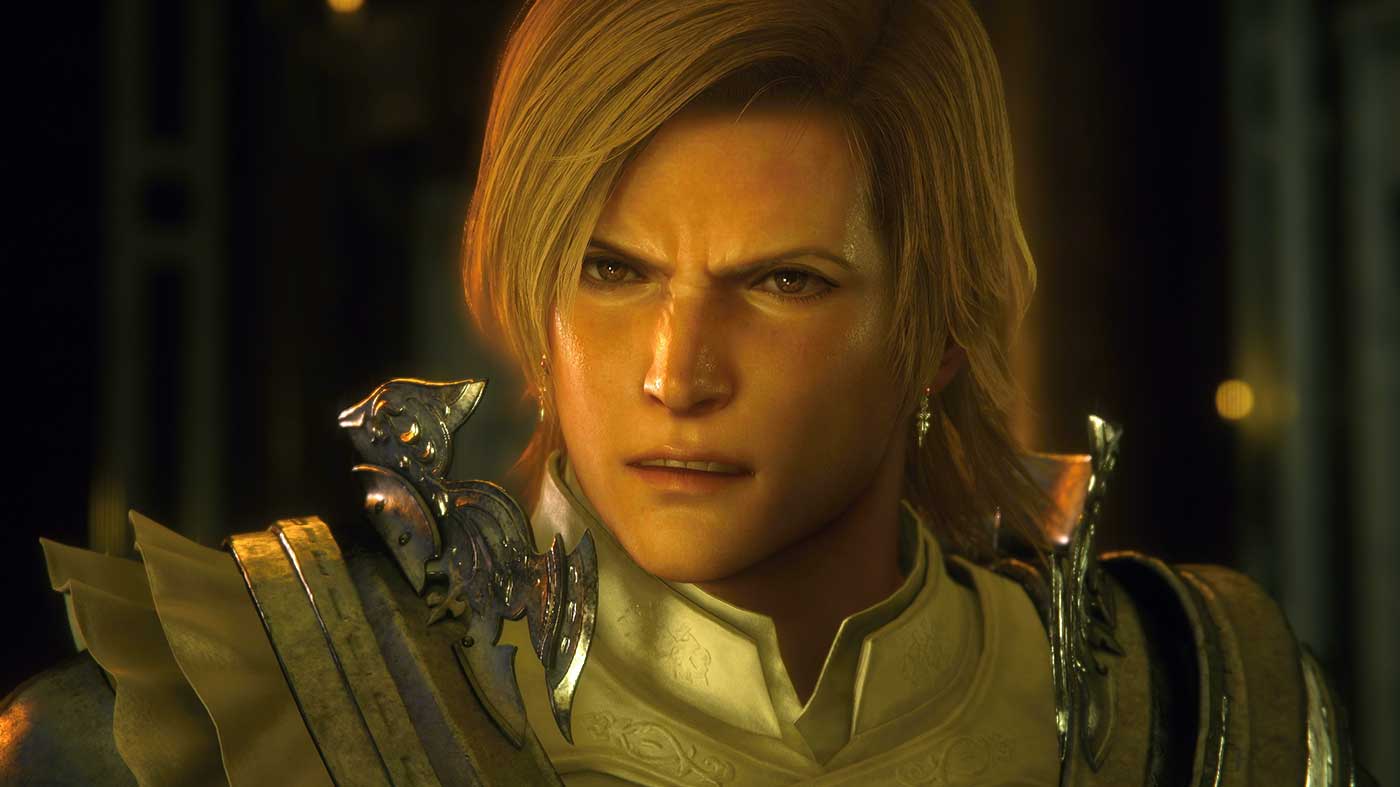
The story, itself, is really gripping and hooked me from early on. Clive is a very good protagonist, and his supporting cast is also well above average. This is especially true of Cid, who’s an absolute badass. Yes, this game is very cutscene heavy, but the good news is that it’s mostly fine because the characters and storyline are so interesting, though it does affect the pacing some. Things do jump around quite a bit, as well, as it’ll often do a ‘Meanwhile…’ segment and show you what’s happening at a different castle, in a different part of Valisthea.
Thankfully, the voice acting is also top notch for the most part. The actors did a really good job of bringing their characters to life, and made them feel real. You’ll hear a lot of British accents, and hear some British slang as well, so go in expecting that.
At the end of the day, Final Fantasy XVI is a really good game, and one that succeeds despite some surprising changes. Although it took me some time to get into, I wound up really enjoying myself and had a hard time putting it down. I’m a big fan of this one, and hopefully you will be, too.
This review is based on the PlayStation 5 exclusive, which we were provided with.

